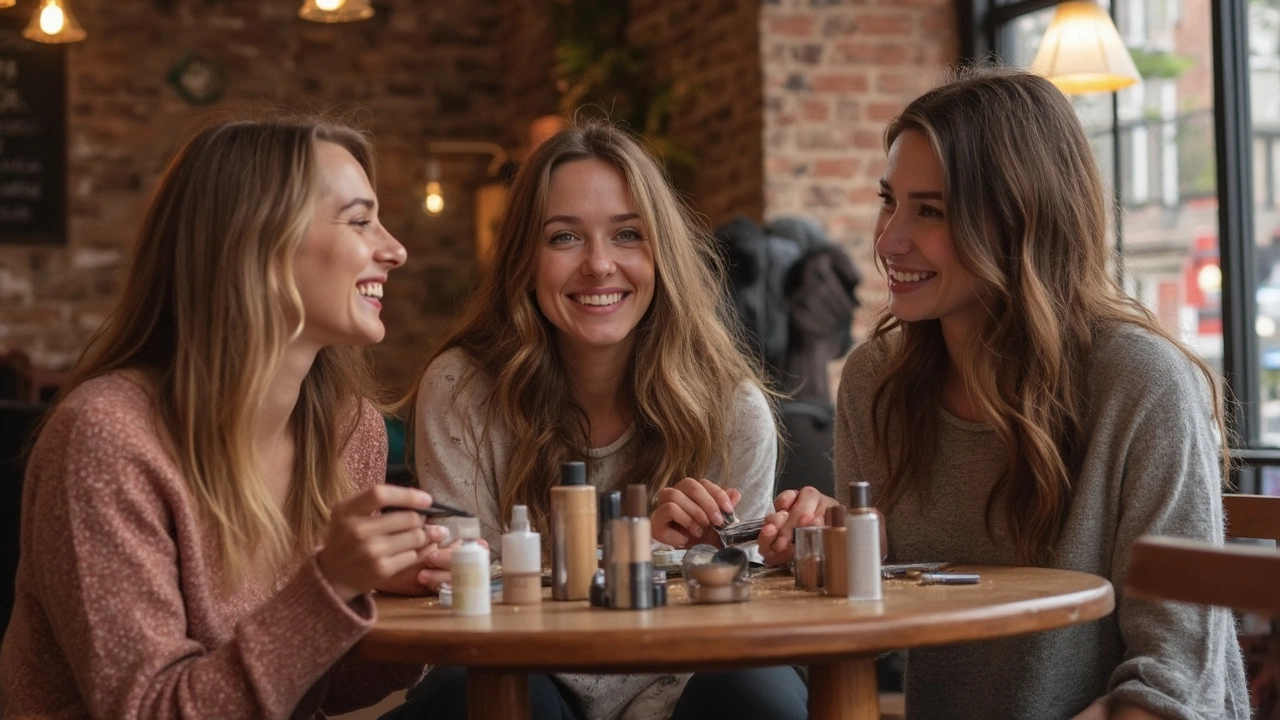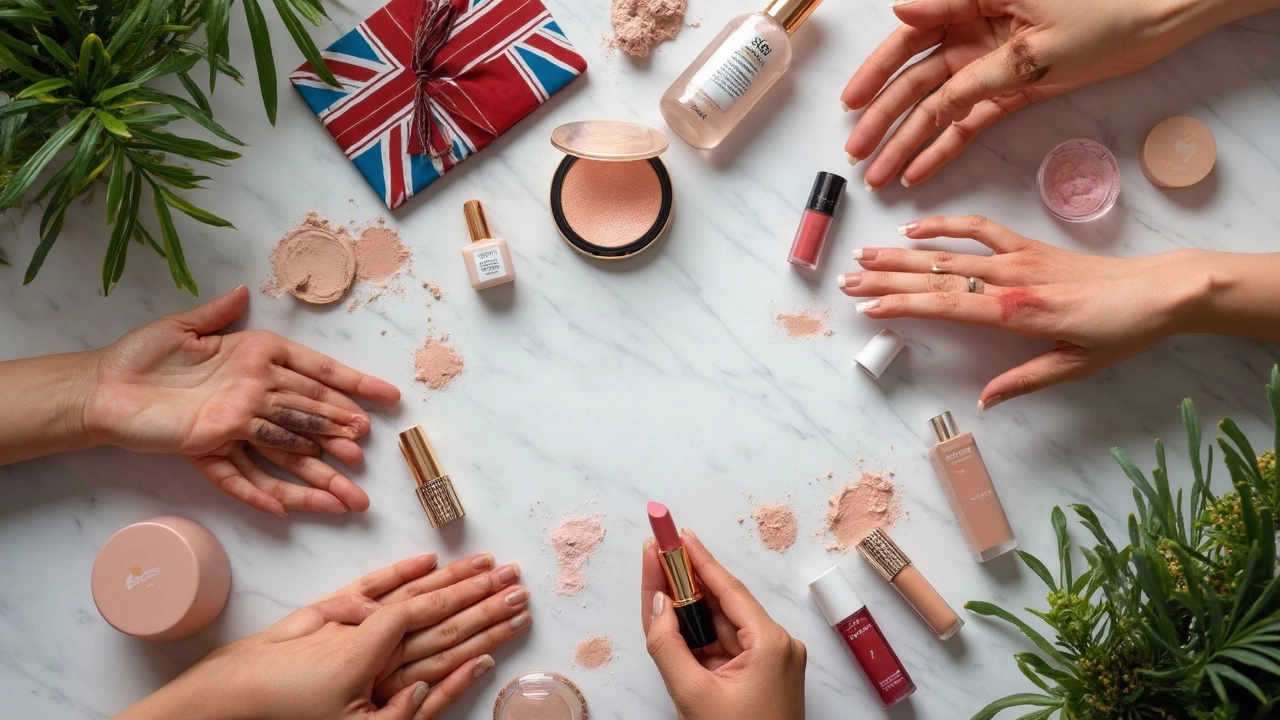There’s no shortage of makeup on the shelves, but only a handful of brands have earned their spot at the top. Ever wondered what makes a brand actually worth your money and loyalty? Plenty of us have gotten burned by gorgeous packaging and big promises, only to end up with breakouts or melted mascara by midday. If you’re tired of trial and error, focusing on the brands that consistently deliver is a smart move.
Here’s a tip right off the bat: don’t get dazzled by hype alone. Some of the most trusted makeup lines built their reputation on formulas that really work, not just on influencer buzz or wild ads. Think about what you need—are you hunting for a foundation that stays put on sweaty afternoons? Or maybe eyeliner that won’t budge during school runs (I’m looking at you, Zephyr, for causing chaos before 8am). Picking from the best brands cuts down on beauty drama.
- What Makes a Great Cosmetic Brand?
- The Five Standout Brands and Why They Rock
- Insider Tips for Choosing the Right Products
- What Sets These Favorites Apart
What Makes a Great Cosmetic Brand?
Not all makeup or skin care is created equal. The best brands don’t just slap their label onto trendy packaging—they earn your trust with smart ingredients, actual performance, and honest testing. A great cosmetic brand blends science with real-life needs, so you can count on results that last beyond a pretty selfie.
Let’s break it down into what really matters:
- Quality Ingredients: If your skin matters to you (and let’s be honest, it matters), look for brands that stick with good stuff like non-comedogenic oils, science-backed actives like niacinamide, and safe pigments. Avoid brands that skim on testing just to save money.
- Proven Results: Mainstream brands test their formulas for months—sometimes even years—before selling them. For example, some top names run clinical trials to prove their products actually do what the label says, whether it’s fighting acne, brightening skin, or creating a flawless finish that lasts twelve hours.
- Inclusivity: Let’s face it, nobody wants to blend five shades of foundation to get close to their skin. Great brands offer a wide range of shades, so everyone can find their match. Fenty Beauty kicks the industry into high gear with 50+ foundation shades, forcing others to catch up.
- Sustainability: Today’s best brands are doing more than just looking pretty—they’re cutting down on plastic, using recycled packaging, and working toward cruelty-free or even vegan formulas. Consumers are paying attention, and big beauty names know it.
- Customer Loyalty: It’s not just hype—brands with lots of repeat customers are usually on to something. Loyalty programs, easy-to-reach help lines, and constant product updates show a brand genuinely cares if you’re happy.
For anyone who loves a good stat, check out how leading brands stack up when it comes to customer satisfaction and inclusivity:
| Brand | Repeat Customer Rate | Foundation Shades | Cruelty-Free? |
|---|---|---|---|
| Fenty Beauty | 67% | 50+ | Yes |
| Estée Lauder | 62% | 56 | Varies |
| MAC | 65% | 60 | Yes |
| Maybelline | 54% | 40 | Varies |
So, if you find yourself overwhelmed by the aisle or website options, check these factors first. Good brands aren’t just a trend—they’re consistent, trusted, and built to actually make your skin and wallet happy over time.
The Five Standout Brands and Why They Rock
You probably see hundreds of different makeup brands every time you walk into a store, but a few really stand out—and not just because influencers say so. These brands have wowed everyone from busy parents to pros backstage at fashion week. Let’s get into what actually puts them at the top of the pile.
- MAC Cosmetics: If you’ve ever wanted makeup that stays put all day, MAC’s got your back. Their lipstick shades are kind of legendary (Ruby Woo, anyone?). Plus, their foundations are known for working across tons of skin tones, which is something most brands struggle with. MAC has supplied products for fashion shows and movie sets for decades, so you know it’s not just hype.
- L’Oréal Paris: This brand pulls off a rare trick—great quality at prices most folks can handle. L’Oréal owns research labs worldwide, which means their mascaras, like the cult-favorite Lash Paradise, go through tons of real-world testing. Their True Match Foundation was one of the first to offer so many undertones, scoring high marks for everyday reliability.
- Estée Lauder: If you’re hunting for products that feel a bit fancy but actually work, Estée Lauder is a go-to. Their Double Wear foundation has a near-cult following for its freaky staying power (seriously, you need proper remover). Fun fact: Estée Lauder owns several smaller loved brands like Clinique and MAC, so that quality trickles down.
- Maybelline New York: Think of Maybelline as the starter kit for anyone jumping into makeup—or just needing good stuff on a budget. The Fit Me! line is famous for blending into different skin types, and their mascaras, especially Great Lash, pop up on almost every “best of” list. Maybelline is known for rolling out new shades every season, so you can always find something fresh.
- Fenty Beauty: Rihanna shook up the whole industry with Fenty’s initial launch. Fenty Beauty pushed the envelope on inclusive shades in foundation, making 50 choices the new norm. It’s hard to overstate how much that changed the game. The Pro Filt’r foundation and Gloss Bomb lip gloss became instant classics; both look good on basically everyone.
You may wonder how these top cosmetic brands truly compare. Here’s a quick numbers snapshot to give you an idea:
| Brand | Founded | Number of Foundation Shades | Star Product | Average Price Range (USD) |
|---|---|---|---|---|
| MAC Cosmetics | 1984 | 63 | Ruby Woo Lipstick | $20 - $45 |
| L’Oréal Paris | 1909 | 45 | Lash Paradise Mascara | $5 - $27 |
| Estée Lauder | 1946 | 56 | Double Wear Foundation | $30 - $80 |
| Maybelline New York | 1915 | 40 | Great Lash Mascara | $5 - $15 |
| Fenty Beauty | 2017 | 59 | Pro Filt’r Foundation | $20 - $42 |
When you pool together reliability, shade range, and star products, these five always end up at the top. Next time you’re staring down endless shelves, you’ll know exactly who’s bringing the goods—and why.

Insider Tips for Choosing the Right Products
Shopping for cosmetic brands shouldn’t feel like a science class—yet sometimes, all those ingredients, claims, and price tags make it tricky. Let’s break down what helps you score products that really work for your skin, your routine, and your budget.
First up: check the ingredient list. Even the most popular brands toss in things that your skin won’t love, especially if you deal with sensitivity or acne. If you can, look for formulas marked as “non-comedogenic”—that means they’re less likely to clog pores. Shoutout to brands like Clinique, which built their whole thing around dermatologist-tested and allergy-safe formulas. For sensitive eyes, opt for fragrance-free mascaras and liners; Maybelline and L’Oréal offer great picks here.
Your skin tone matters more than anything. Lots of brands now offer 30, 40, or even 60+ foundation shades, but some (like Fenty Beauty) get high marks for inclusivity. Don’t settle for close-enough—get color matched at the store, or use those virtual try-on tools offered by MAC and Sephora online. Speaking of online, always double check product return policies before dropping serious cash. Not every store or brand is as friendly about returns as you’d hope.
The real-world test? How does it last when you’re racing through the day chasing after little kids (shout out to Orla’s glitter obsession)? Longevity matters! While lots of brands brag about being "longwear," Allure’s 2024 beauty survey found 62% of testers noticed their makeup faded before lunchtime—unless they stuck to Estée Lauder or Urban Decay.
- Check for allergy-tested or non-comedogenic labels if you’ve got sensitive skin.
- Pick brands with shade ranges that respect everyone—not just a lucky few.
- Don’t believe every “clean” claim. Terms like "natural" or "organic" aren’t strictly regulated. Look for clear ingredient lists and certifications if that stuff matters to you.
- Swatch or sample before you buy if you can—especially for pricier items.
- Keep an eye on your budget. A drugstore mascara can knock it out of the park just as well as a $30 one.
If you’re love a numbers moment, here’s how different types of products stack up in terms of typical shelf life and price ranges (data from a 2025 Consumer Reports survey):
| Product | Average Shelf Life | Typical Price Range |
|---|---|---|
| Lipstick | 1-2 years | $7 - $40 |
| Mascara | 3-6 months | $5 - $35 |
| Foundation | 1-2 years | $10 - $65 |
| Powder | 2 years | $8 - $60 |
| Blush | 2 years | $6 - $45 |
Pro tip: That mascara you’ve had for a year? Toss it. It’s a bacteria magnet—eye infections are not a good look. When in doubt, write the date you open a product right on its package with a Sharpie. Your face will thank you later.
What Sets These Favorites Apart
Okay, so what actually makes these cosmetic brands the real MVPs in a sea of wannabes? It’s not just slick ads or the latest TikTok trend. These top brands hit a sweet spot: reliable science, great shade ranges, formulas that work for most people, and a track record for nailing every beauty need from sensitive skin to sweat-proof wear.
Let’s break it down with some cold, hard facts and not just pretty swatches. For example, Estée Lauder owns a bunch of sub-brands, but its Double Wear Stay-In-Place Foundation has topped best-seller lists for years. According to a 2024 NPD report, one bottle sells every 60 seconds worldwide. Another fan-favorite, Maybelline’s Lash Sensational Mascara, was the most-bought drugstore mascara in the US for three years running.
So, what else do these brands do better?
- They focus on diverse skin tones. Fenty Beauty launched with 40 foundation shades, and now the bar is set—most top brands have followed suit.
- They pour money into research. L’Oréal, for example, spends over $1 billion a year on scientific innovation to keep products safe and effective.
- They keep it honest with customers. Urban Decay and MAC are vegan or cruelty-free where possible, and that’s a big deal for lots of buyers.
- You actually get what you pay for. Higher-end brands back up their price tags with long-lasting formulas, while drugstore giants focus on affordability without ditching quality.
Here’s a quick snapshot of how some top brands compare at a glance:
| Brand | Strength | Standout Product | Price Range |
|---|---|---|---|
| Estée Lauder | Longevity | Double Wear Foundation | $$$ |
| Fenty Beauty | Shade Diversity | Pro Filt’r Foundation | $$ |
| Maybelline | Affordability | Lash Sensational Mascara | $ |
| L’Oréal Paris | Innovation | True Match Foundation | $$ |
| MAC | Pro-level Results | Studio Fix Fluid | $$$ |
Here’s a quote that always sticks with me, from Allure magazine’s beauty editor Jenna Rosenstein:
“A good cosmetic brand is only as trustworthy as its worst performing product—these brands rarely let you down, no matter what you pick off the shelf.”
Honestly, if you want makeup that lives up to the hype, stick with the names that keep proving themselves year after year—and keep an eye out for launches that show they’re listening to real people, not just celebrities.

